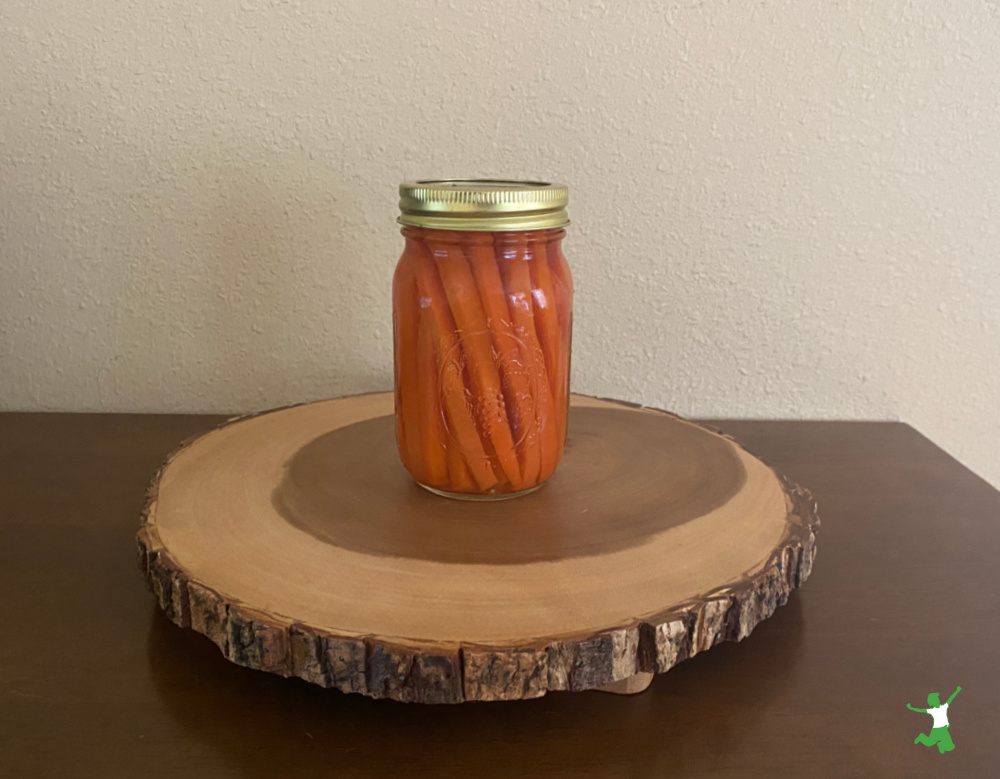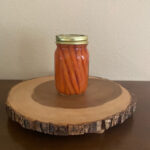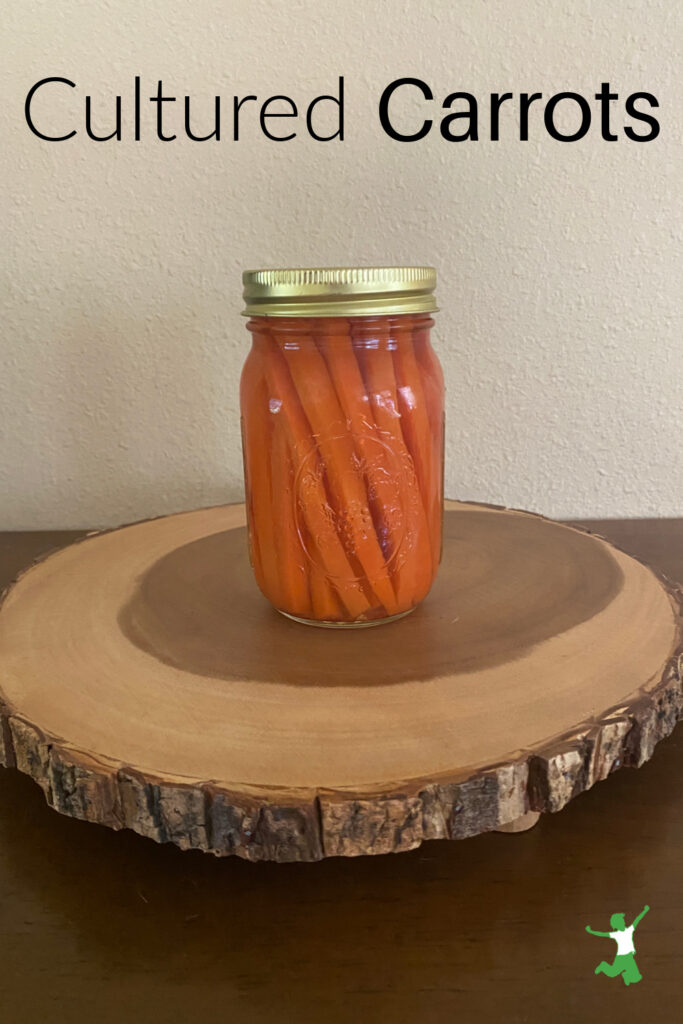Table of Contents[Hide][Show]
How to culture carrots to enhance flavor, digestibility, and nutritional value through the addition of beneficial lactic acid bacteria and enzymes.

Children love to munch on carrot sticks.
So why not ferment them to add a probiotic feature to this popular and tasty snack?
Culturing carrots is a very simple process.
Peel and chop a half dozen large carrots and you are nearly done!
Place the uniformly sliced sticks into a mason jar, add filtered water and starter. Then, let Mother Nature do the rest!
Add a couple of fresh oak leaves if desired to maintain extra crunchiness.
Serving Suggestions
I like to enjoy fermented carrots atop a salad to add a tasty probiotic feature to the dish.
This chopped salad recipe is one of my favorites for this purpose.
Another suggestion is to serve cultured carrot sticks as an appetizer for the main meal with homemade dill sauce as a dip.
Homemade ranch dressing works for dipping too (blend full fat yogurt and healthy mayonnaise 1:1 in a small bowl. Mix in a bit of garlic powder to taste and you are done!).
Another idea is to include them in school lunchboxes for a probiotic snack that looks “normal” even to classmates eating Lunchables.

Cultured Carrots Recipe
How to culture carrots to enhance flavor, digestibility, and nutritional value through the addition of beneficial lactic acid bacteria and enzymes.
Ingredients
- 4-6 large carrots preferably organic
- 1 Tbsp liquid whey
- 1/2 Tbsp sea salt
- 1-2 fresh oak leaves optional to maintain extra crunchiness
Instructions
-
Peel and slice carrots into sticks about 1/3" thick and 5" long.
-
Place optional oak leaves at the bottom of a one-pint mason jar and then put in the carrot sticks.
-
Fill the jar to one inch below the rim with filtered water. Add sea salt and whey, *Make sure the carrot sticks are completely submerged in the brine water. If they are a bit too long, remove them from the jar and trim slightly before placing them back in the jar.
-
Affix the lid tightly and turn the jar gently a few times to thoroughly mix.
-
Place the jar on the counter for two days to ferment. You may turn the jar once or twice a day during this time to facilitate the culturing process.
-
Refrigerate the carrot sticks and enjoy as desired. They make a great snack to add to lunchboxes. Coarsely chop to add a probiotic feature to salads.
-
Fermented carrot sticks last for months in the refrigerator.









What are fresh oak leaves? Do you mean just go outside and pick up a few leaves from our neighborhood oak tree? Or are they a special health food thing I’m not aware of?
Yes, you literally pick a couple oak leaves off a tree (in an unsprayed area). The tannins in the leaves maintain the crunchiness of the carrots.